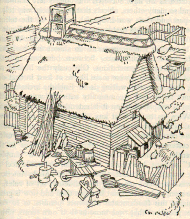





































Primary sources can be found in libraries, archives, and private collections throughout the world. Sometimes they are in paper, sometimes in microformat, and sometimes in digital format.
Worldcat is a global catalog of more than 1 billion items that contains descriptions of books, archives, manuscript collections, digital and audio-visual materials in libraries and other repositories around the world. Using Worldcat's ADVANCED SEARCH option you can limit your search by format, date, publication location, and many other parameters.
As more and more primary sources are being digitized, more finding aids and lists of collections can be found on the Internet.These websites can be used to search for primary sources:
Archive Grid: Contains more than a million collection descriptions for primary materials housed in the US, UK, and Ireland.
National Archives "Getting Started with Primary Source Research"
Primary sources are works that offer ORIGINAL intellectual content. Primary sources generally serve as foundation material for a particular subject; they are the original sources on which others base their analyses.
Primary sources include historical and legal documents, eyewitness accounts (e.g. diaries, newspaper articles), art (e.g. creative writing, photographs), audio and video recordings, and speeches. Raw data such as interviews, surveys, fieldwork, statistics, and experiments are also primary sources. This type of primary source is often found in scholarly journal articles, government reports, or papers delivered at conferences.
Secondary sources BUILD off of primary sources in some way. They may describe, discuss, interpret, comment upon, analyze, evaluate, summarize, and/or process primary sources.
Secondary sources include newspaper or magazine articles, book or movie reviews, and scholarly journal articles or books that interpret or evaluate research. Some secondary sources, such as encyclopedias or dictionaries, provide overviews of a topic or event. These summaries are easy to read and make great places to begin exploring any topic for a research paper.

WARNING: Sometimes it can be tricky to determine whether something is primary or secondary because you can't rely on format alone.
For example, a newspaper article about the Apollo 11 moon landing from 1969 would be a primary source. A newspaper article about the Apollo 11 moon landing from this year, the 50th anniversary, would be a secondary source.
Similarly, a scholarly journal article with the results of an author's experiment would be a primary source. A scholarly journal article summarizing the results of multiple experiments on the same topic would be a secondary source.
In each of these cases, you have to think about the context of the information to determine whether it is primary or secondary.
| Adapted from: Kirszner, Laurie G. The Holt Handbook. Harcourt College Publishers, 2002. Ithaca College Library. "Primary and Secondary Sources." Ithaca College, https://libguides.ithaca.edu/research101/primary, Accessed 24 July 2018. |